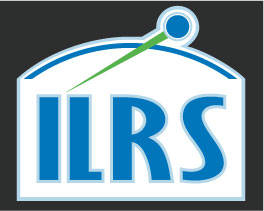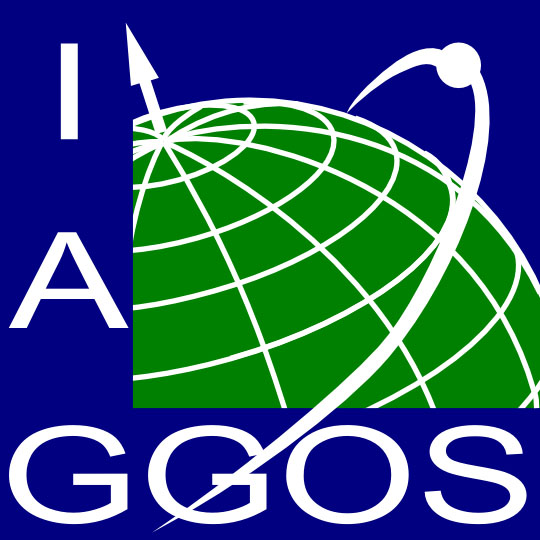
STSAT-2
ILRS Mission Support Status:
The mission will use SLR data to determine provide precise orbit determination of STSAT-2, to calibrate the main payload (DREAM), and to support the science research such as earth science and geodynamics.
Unfortunately, the STSAT-2A satellite was lost due to a launch failure on August 25, 2009.
STSAT-2 Mission Support Request Form (January 2009/PDF):
Name: STSAT-2A & 2B (Science and Technology SATellite-2, Two Satellites)
Host: Ministry of Education, Science and Technology (MEST)
Satellite Host Contact: Kyoung-Lim Lee, Space Development Division
Satellite Program manager: KARI
Satellite manufacturer: KAIST SaTReC
Primary Technical Contact: Sang-Hyun Lee, SLR project manager
Technical Contact Mailing Address: SaTReC, KAIST 335 Gwahangno (373-1 Guseong-dong), Yuseong-gu, Daejeon 305-701, Republic of KOREA
Technical Contact Phone: 82-42-350-8629
Technical Contact Fax: 82-42-861-0064
Technical Contact Email: shlee @ satrec.kaist.ac.kr
Web Address: http://satrec.kaist.ac.kr
Alternate Technical Contact: Kyunghee Kim, SLR data analysis
Alternate Technical Contact Mailing Address: SaTReC, KAIST 335 Gwahangno (373-1 Guseong-dong), Yuseong-gu, Daejeon 305-701, Republic of KOREA
Alternate Technical Contact Phone: 82-42-350-8635
Alternate Technical Contact Fax: 82-42-861-0064
Alternate Technical Contact Email: khkim @ satrec.kaist.ac.kr
Web Address: http://satrec.kaist.ac.kr
Primary Science Contact: Sang-Hyun Lee, SLR project manager
Science Contact Mailing Address: SaTReC, KAIST 335 Gwahangno (373-1 Guseong-dong), Yuseong-gu, Daejeon 305-701, Republic of KOREA
Science Contact Phone: 82-42-350-8629
Science Contact Fax: 82-42-861-0064
Science Contact Email: shlee @ satrec.kaist.ac.kr
Web Address: http://satrec.kaist.ac.kr
Alternate Science Contact: Kyunghee Kim, SLR data analysis
Alternate Science Contact Mailing Address: SaTReC, KAIST 335 Gwahangno (373-1 Guseong-dong), Yuseong-gu, Daejeon 305-701, Republic of KOREA
Alternate Science Contact Phone: 82-42-350-8635
Alternate Science Contact Fax: 82-42-861-0064
Alternate Science Contact Email: khkim @ satrec.kaist.ac.kr
Web Address: http://satrec.kaist.ac.kr
MISSION SPECIFICS:
Scientific or Engineering Objectives of Mission:
The objectives of STSAT-2 mission consist of three missions, which are the domestic development of a low earth orbit 100kg satellite which will be launched by KSLV-1(Korea Space Launch Vehicle-1) from the domestic space center (NARO Space Center),the development of advanced technology for small spacecraft, and the development and operation of world-class space science payloads. STSAT-2 have two payloads: the main payload, DREAM (Dual-channel Radiometer for Earth and Atmosphere Monitoring) and the secondary payload, LRA (Laser Retroreflector Array). The DREAM mission objectives are to acquire brightness temperature of the earth at 23.8 GHz and 37 GHz, and to acquire physical parameters such as cold liquid water and water vapor after post-processing. The mission objective of spacecraft techologies is to develop a thermally, mechanically, electrically stable and radial resistant spacecraft system having high-precision attitude determination and control capability in a high eccentric ellipsoidal orbit.
For spacecraft technology experiments, STSAT-2 has the following instrumentations onboard:
- Pulsed Plasma Thruster (PPT)
- Dual-Head Star Tracker (DHST)
- Fine Digital Sun Sensor (FDSS)
- Compact on-board computer
- High-speed data transmission (10Mbps)
Satellite Laser Ranging (SLR) Role of Mission:
The SLR mission objectives are to determine the more precise orbit of STSAT-2 than possible with S-band tracking data alone, to calibrate the main payload (DREAM), and finally to support the science research such as earth science and geodynamics.
SLR technology will provide the unique opportunity to investigate the variations of an ellipsoidal orbit. Additionally, the precise orbit determination (POD) of STSAT-2 can be used to evaluate the performance of the first Korean launcher (KSLV-1).
Anticipated Launch Date: 10 August, 2009 (STSAT-2A), April 2010 (STSAT-2B)
Expected Mission Duration: Two years
ANTICIPATED ORBITAL PARAMETERS:
Altitude: 300km at the perigee and 1500km at the apogee (Elliptical orbit)
Inclination: 80 degrees
Eccentricity: 0.082
Period: 102.998 min
TRACKING REQUIREMENTS:
Tracking Schedule: 24 hours, 7 days a week
Spatial Coverage: Global
Temporal Coverage: All stations
Data Accuracy: Several cm (to be defined)
OPERATIONS REQUIREMENTS:
Mission Coordinator (ILRS, Subnetwork, etc.): KARI, China SLR Network, WPLTN, ILRS
Priority of SLR for POD: Middle priority (to be discussed)
Other Sources of POD (GPS, PRARE, Doppler, etc.): S-BAND Tracking
Primary Analysis Center: KAIST SaTReC
Normal Point Time Span (sec): 15 sec (To be determined)
Subnetworks/Stations Requested to Track: All ILRS stations
Data Delivery Time Requirements: No special request, as usual (To be defined)
RETROREFLECTOR ARRAY INFORMATION:
Description of Array and Location: LRA consists of 9 corner cubes and symmetrically mounted on a hemispherical surface with one nadir-looking corner cube in the center and surrounded by an angled ring of eight corner cubes. LRA is equipped on the satellite's +z earth panel forward earth and will allow laser ranging in the field of view angles of 360 degrees in azimuth and 60 degrees in elevation around the perpendicular to the earth direction. The design is similar with Shunzhou-IV, ERS-1 & 2, Envisat, ADEOS-2, and ALOS.
The specifications for the STSAT-2 retroreflector array are as follows:
- Size : 200 x 65mm (height)
- Number of prisms : 9
- Prism diameter : 31.5mm
- Feld of view (FOV) : +/-60 degrees
- Mass : 815.5 g
- Materials : Fused silica, Al
- Reflection surface : No coating
Technical Contact for Array Correction/Center of Mass: Sang-Hyun Lee, SLR projector manager
Phone No.: 82-42-350-8629
E-mail Address: shlee @ satrec.kaist.ac.kr
Other Comments: The distances between CG(Center of Gravity) and OC(Optical Center) are 267mm in the STSAT-2A and 271.2mm in the STSAT-2B. So, STSAT-2A should be performed range correction.




